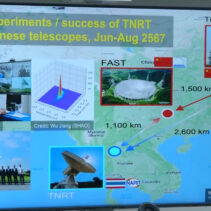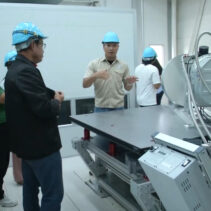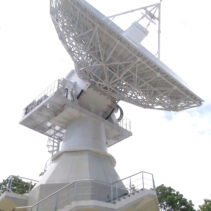The National Astronomical Research Institute of Thailand (NARIT), under the Ministry of Higher Education, Science, Research and Innovation, has made a major leap forward in astronomical research with the deployment of ASEAN’s largest national radio telescope, equipped with advanced research systems that not only can it explore the universe but also monitor the earth’s crust and predict earthquakes with greater precision.
Located on over 50 rai of land at the Huai Hong Khrai Royal Development Study Centre in Doi Saket District, the facility serves as Thailand’s primary hub for radio astronomy research. The centre houses two main radio telescopes:
1. The 40-metre National Radio Telescope – the largest of its kind in Southeast Asia which is designed to observe celestial objects such as stars, galaxies, and black holes while also supporting a wide range of radio frequencies from 300 MHz to 115 GHz, enabling observation across multiple spectral bands.
2. The 13-metre VGOS Radio Telescope, situated nearby and supported by China, is used for geodesy (the study of Earth’s shape, orientation, and gravity). It plays a vital role in Very Long Baseline Interferometry (VLBI) networks to study the universe, while also collecting ultra-precise data on the movement of Earth’s crust — at millimeter-scale resolution. This is essential for earthquake prediction and monitoring the Earth’s spatial position changes as tectonic plates shift, helping to evaluate global geodynamic trends.
The technology and instruments were developed by Thai researchers in collaboration with leading astronomical institutions from Germany, South Korea, and Spain.
NARIT is also currently constructing two additional VGOS telescopes in Nakhon Si Thammarat and Songkhla, marking a significant advancement in Thai astronomy. These initiatives position Thailand at the forefront of not only exploring the cosmos, but also probing the Earth’s interior to generate internationally collaborative scientific knowledge with real-world applications for the future.







